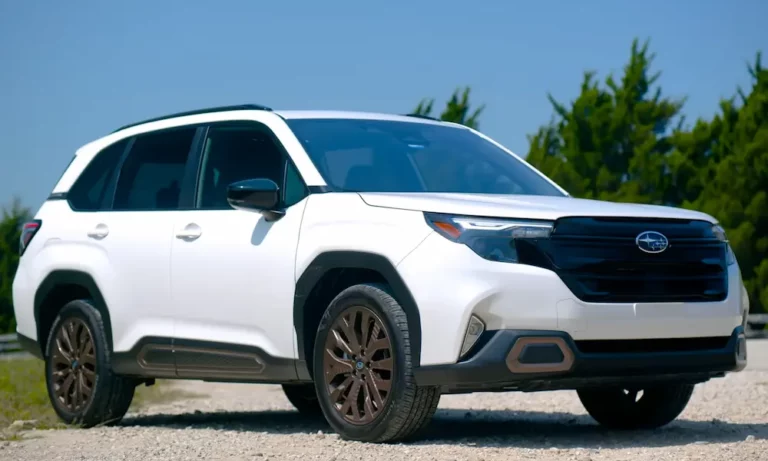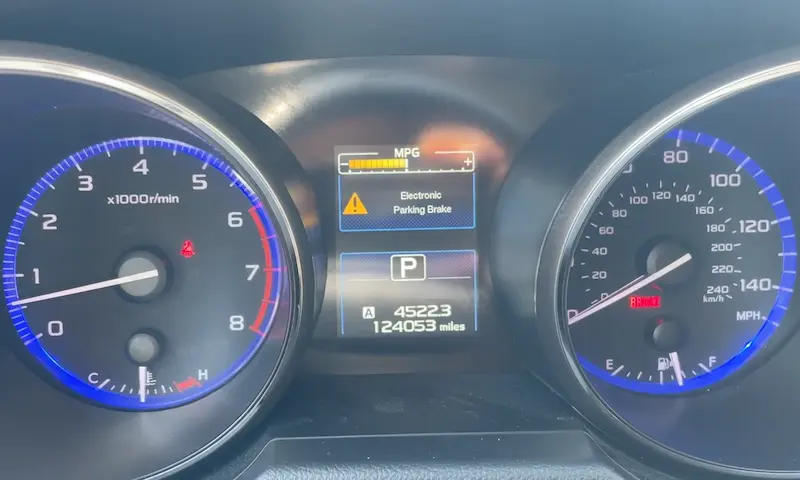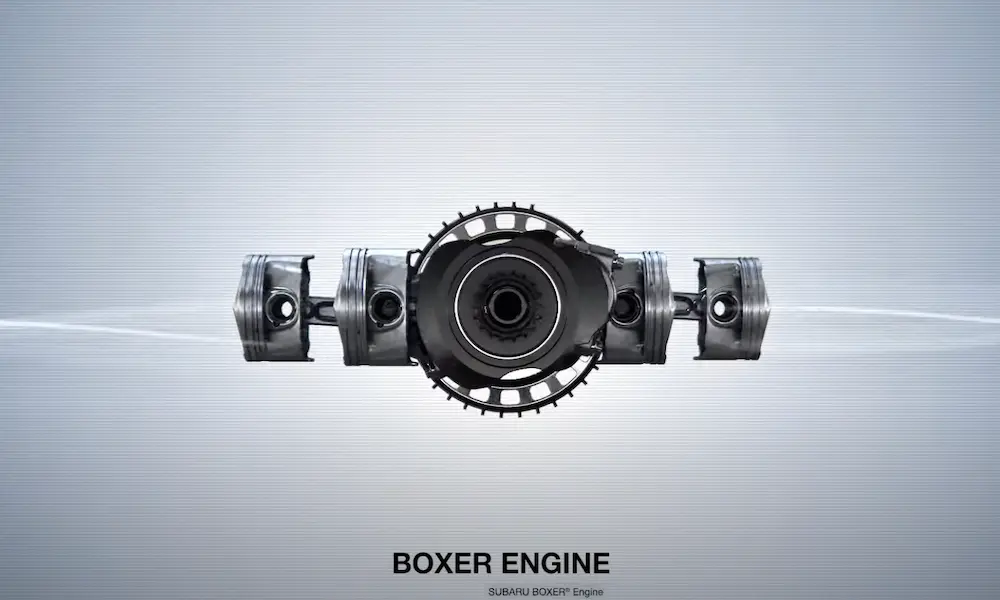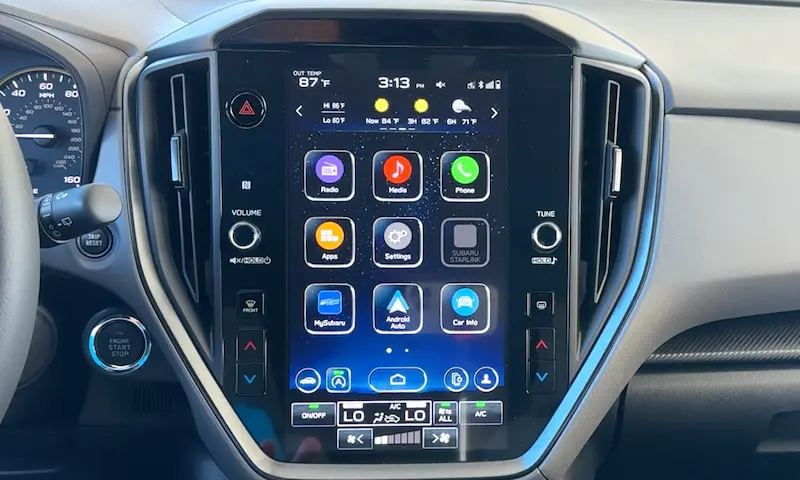Is your Subaru’s oil disappearing faster than you expected? You might be checking your dipstick more often than your email. Subaru’s Boxer engines have a reputation for drinking oil that goes beyond normal consumption. This guide breaks down everything you need to know about managing this common issue and what steps you can take to protect your engine.
Why Subaru Engines Consume Oil
Subaru’s distinctive Boxer engines are known for their smooth operation and low center of gravity, but they’ve also become notorious for their thirst for oil. The issue isn’t universal across all models, but it’s common enough to warrant attention.
Modern engines are designed with tighter emission controls and fuel economy in mind. For Subaru, this has meant using lower-viscosity oils and engineering with slightly looser internal tolerances. These design choices can lead to more oil finding its way into the combustion chamber where it burns off.
According to data compiled by owners, affected Subarus might consume one quart every 1,000-2,000 miles—significantly more than the industry expectation of one quart per 6,000-12,000 miles for modern engines.
Which Subaru Models Are Most Affected
The oil consumption issue doesn’t impact all Subaru vehicles equally. These models have shown the highest rates of excessive oil consumption:
2.5-liter FB engines in:
- Forester (2011-2014)
- Legacy (2013-2014)
- Outback (2013-2014)
2.0-liter FB engines in:
- Impreza (2012-2015)
- Crosstrek (2012-2015)
2.5-liter EJ engines in:
- Earlier Forester models (2010-2012)
- Legacy and Outback (2010-2012)
If you drive one of these models, you should be especially vigilant about monitoring your oil levels regularly.
What Subaru Considers “Normal” Oil Consumption
Here’s where things get interesting. Subaru’s own guidelines consider oil consumption of up to one quart per 1,000 miles to be within normal operating parameters. This standard is notably more lenient than many other manufacturers and often surprises Subaru owners who are used to rarely adding oil between scheduled services.
As detailed in service bulletins, Subaru will only consider consumption exceeding this threshold as potentially problematic and worthy of warranty repair.
Root Causes of Excessive Oil Consumption
Understanding why your Subaru might be going through oil faster than expected can help you address the issue properly:
1. Piston Ring Design
The primary culprit in many cases is the piston ring design and installation. In affected engines, the rings may not create an optimal seal against the cylinder walls, allowing oil to slip past and enter the combustion chamber.
2. PCV System Issues
The Positive Crankcase Ventilation (PCV) system regulates crankcase pressure. When this system becomes clogged or malfunctions, excessive pressure can force oil past seals and into places it shouldn’t go. Expert mechanics recommend inspecting and servicing this system as part of routine maintenance.
3. Low-Viscosity Oils
Subaru specifies 0W-20 synthetic oil for many models to maximize fuel efficiency. This thinner oil can more easily find its way past seals and rings compared to heavier oils used in previous generations.
4. Carbon Buildup
Over time, carbon deposits can form on piston rings, preventing them from properly scraping oil from cylinder walls. This is especially true in direct-injection engines, which are prone to carbon accumulation.
How to Identify Excessive Oil Consumption
Not sure if your Subaru is consuming too much oil? Here are the telltale signs:
- Oil warning light illuminates between scheduled oil changes
- Dipstick shows oil level dropping below the minimum mark within a few thousand miles
- Blue smoke from your exhaust, especially during acceleration
- Need to add oil multiple times between scheduled changes
- Engine running roughly or experiencing decreased performance
If you notice any of these symptoms, it’s time to start tracking your oil consumption more carefully.
Tracking Your Subaru’s Oil Consumption
Here’s a simple method to monitor how much oil your vehicle is using:
- Start with a full oil change and fill to the exact “Full” mark on the dipstick
- Reset your trip odometer
- Check your oil level every 500-1,000 miles, noting the level
- When you need to add oil, record how much you added and at what mileage
- Calculate your consumption rate (quarts per 1,000 miles)
Use this table to track your results:
| Date | Mileage | Oil Added (Quarts) | Consumption Rate |
|---|---|---|---|
| 5/1/23 | 50,000 | 0 (Initial fill) | – |
| 5/15/23 | 51,000 | 0.5 | 0.5 qt/1,000 mi |
| 6/1/23 | 52,000 | 0.75 | 0.75 qt/1,000 mi |
This data will be invaluable if you need to approach your dealer about warranty service.
Subaru’s Official Response and Service Bulletins
Subaru has acknowledged the oil consumption issue through several Technical Service Bulletins (TSBs). Most notably, Service Bulletin 02-157-14R, revised in November 2015, established the procedure for addressing excessive oil consumption in FB engines.
According to information shared by Subaru owners, the protocol typically involves:
- A dealer-administered oil consumption test
- If consumption exceeds 1 quart per 1,000 miles, replacement of the short-block assembly
- Coverage under warranty (new-car, powertrain, or extended warranty)
Some owners have successfully had repairs completed under these service bulletins, even after their standard warranty expired, by documenting their consumption issues and referencing the appropriate TSB.
Legal Actions and Settlements
The oil consumption issue led to class-action lawsuits against Subaru. In 2016, Subaru settled a lawsuit covering 2011-2015 models with the FB engine. The settlement extended the warranty for oil consumption issues to 8 years or 100,000 miles and provided reimbursement for some owners.
According to legal sources, affected owners may still have recourse under state lemon laws or through Subaru’s customer service if they’re experiencing severe consumption issues, even if they weren’t part of the original settlement.
Practical Solutions for Subaru Oil Consumption
While some level of oil consumption may be unavoidable in affected models, here are practical steps you can take to manage and potentially reduce the issue:
Regular Monitoring
Check your oil level every 1,000 miles or at every other fuel fill-up. This simple habit can prevent engine damage from critically low oil levels. Experienced Subaru mechanics emphasize this as the most important preventative measure.
Oil and Filter Selection
- Use only full synthetic oil that meets Subaru’s specifications
- Some owners report slightly better results with 5W-30 oil instead of 0W-20, though this may impact fuel economy and should only be considered in older vehicles
- Use high-quality oil filters and change them with every oil change
Maintenance Intervals
- Consider shorter oil change intervals (3,500-4,000 miles instead of the recommended 6,000)
- Maintenance experts suggest this can help reduce carbon buildup on piston rings
PCV System Service
- Have your PCV valve and related components checked every 30,000-50,000 miles
- A clogged PCV system can increase crankcase pressure, worsening oil consumption
- Replacing the valve is relatively inexpensive and can help manage the issue
Driving Habits
Your driving style can impact oil consumption:
- Avoid extended idling when possible
- Allow proper warm-up time in cold weather
- Avoid constant high-RPM driving
- Complete occasional longer drives to fully warm the engine
Engine Treatments and Additives
Some owners have experimented with oil additives designed to clean piston rings or improve sealing. While results vary widely, here’s what you should know:
| Treatment Type | Potential Benefits | Considerations |
|---|---|---|
| Ring Cleaners | May remove carbon deposits | Temporary solution at best |
| Oil Stabilizers | May reduce consumption slightly | Can affect oil viscosity |
| Engine Flushes | Removes sludge and deposits | Should be done professionally |
Most professional mechanics are skeptical about miracle cures but acknowledge that some treatments may provide modest improvements in certain circumstances.
Dealing with Your Subaru Dealer
If your Subaru is consuming oil at a rate higher than 1 quart per 1,000 miles, you should approach your dealer about performing an oil consumption test. Here’s how to prepare:
- Document your oil consumption with detailed records
- Reference the appropriate TSB for your model (like TSB 02-157-14R)
- Request an official oil consumption test
- If within warranty coverage, insist on the short-block replacement if the test confirms excessive consumption
- Be persistent but professional in your communications
Many owners report that dealer experiences vary widely, with some requiring multiple visits before acknowledging the issue.
Long-Term Ownership Considerations
If you plan to keep your oil-consuming Subaru for the long haul:
- Budget for oil costs: Factor in the additional expense of regularly purchasing oil for top-offs
- Consider extended warranties: If available, these may cover future engine repairs
- Build a relationship with a knowledgeable Subaru specialist or dealer
- Stay informed about any new service bulletins or warranty extensions
Many owners find that, despite the oil consumption issue, their Subarus remain reliable vehicles that simply require more attentive maintenance.
Is the Problem Fixed in Newer Models?
The good news is that Subaru has made design changes to address oil consumption in newer models. Models from 2016 onward generally show improved oil consumption characteristics.
However, some newer model owners still report higher-than-expected consumption, suggesting that while the issue may be less prevalent, it hasn’t been completely eliminated.
The Bottom Line on Subaru Oil Consumption
Owning a Subaru with oil consumption tendencies doesn’t mean you’re stuck with a lemon. With proper monitoring, maintenance, and advocacy for yourself when dealing with dealers, many owners enjoy hundreds of thousands of trouble-free miles from their vehicles.
The boxer engine’s unique characteristics contribute to the distinctive driving experience that makes Subaru owners so loyal. For many, the extra vigilance required to keep an eye on oil levels is a small price to pay for the all-weather capability and driving dynamics their Subarus provide.
Just remember: check your oil regularly, keep records of consumption, and don’t ignore warning signs that could indicate more serious problems developing.















